Elemental
Foreword
by Douglas Dawson
The Certainty of Variability
by Catherine White and Warren Frederick
Published by Douglas Dawson Gallery, 2014
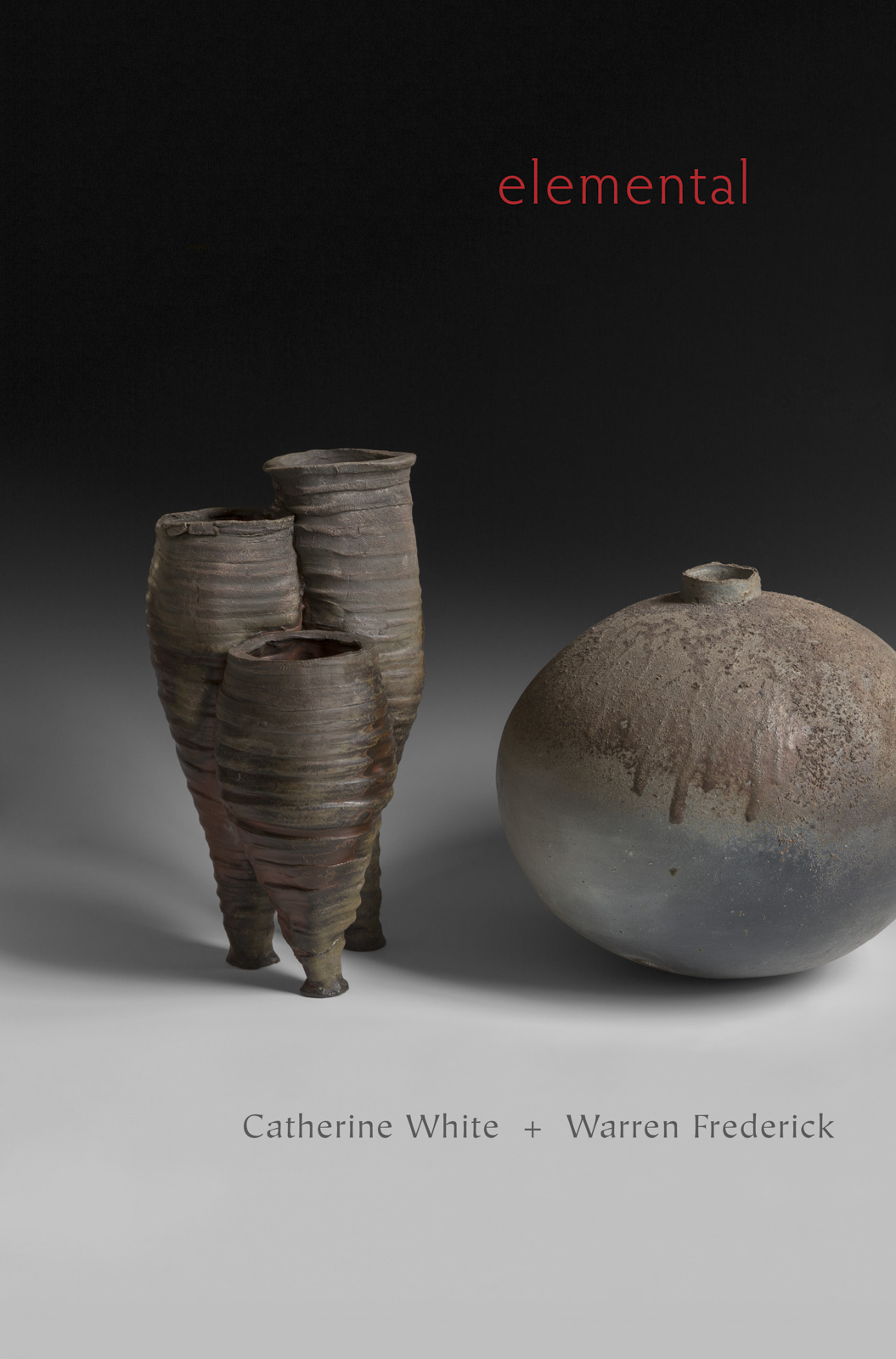
Triplet, Catherine White
Left: h 14" x 8"
Heavy Moon, Warren Frederick
Right: h 11" x 13"
(Catalog Cover)
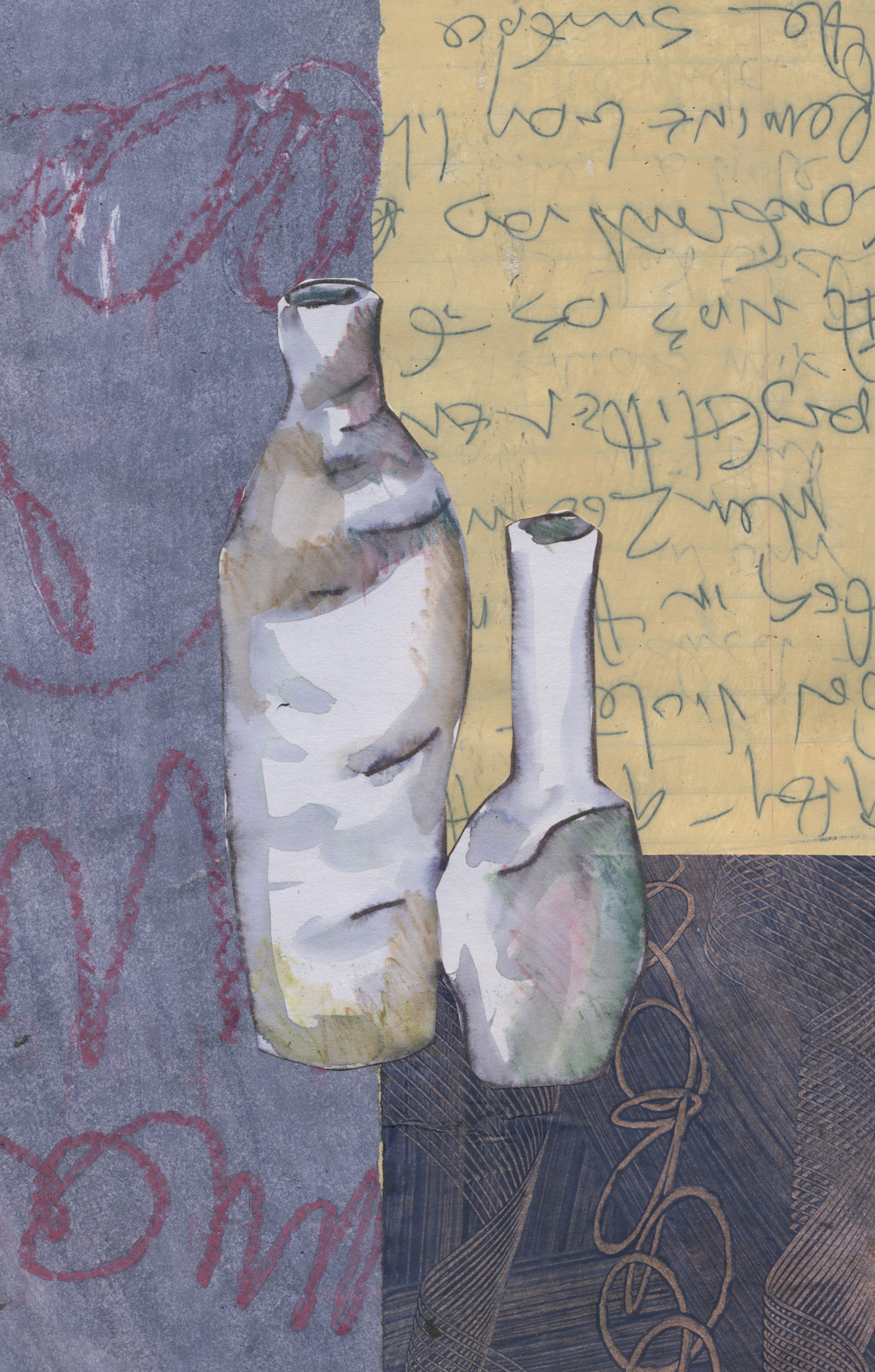
Bottles (drawing), Catherine White
h 10" x 7" (page 2)
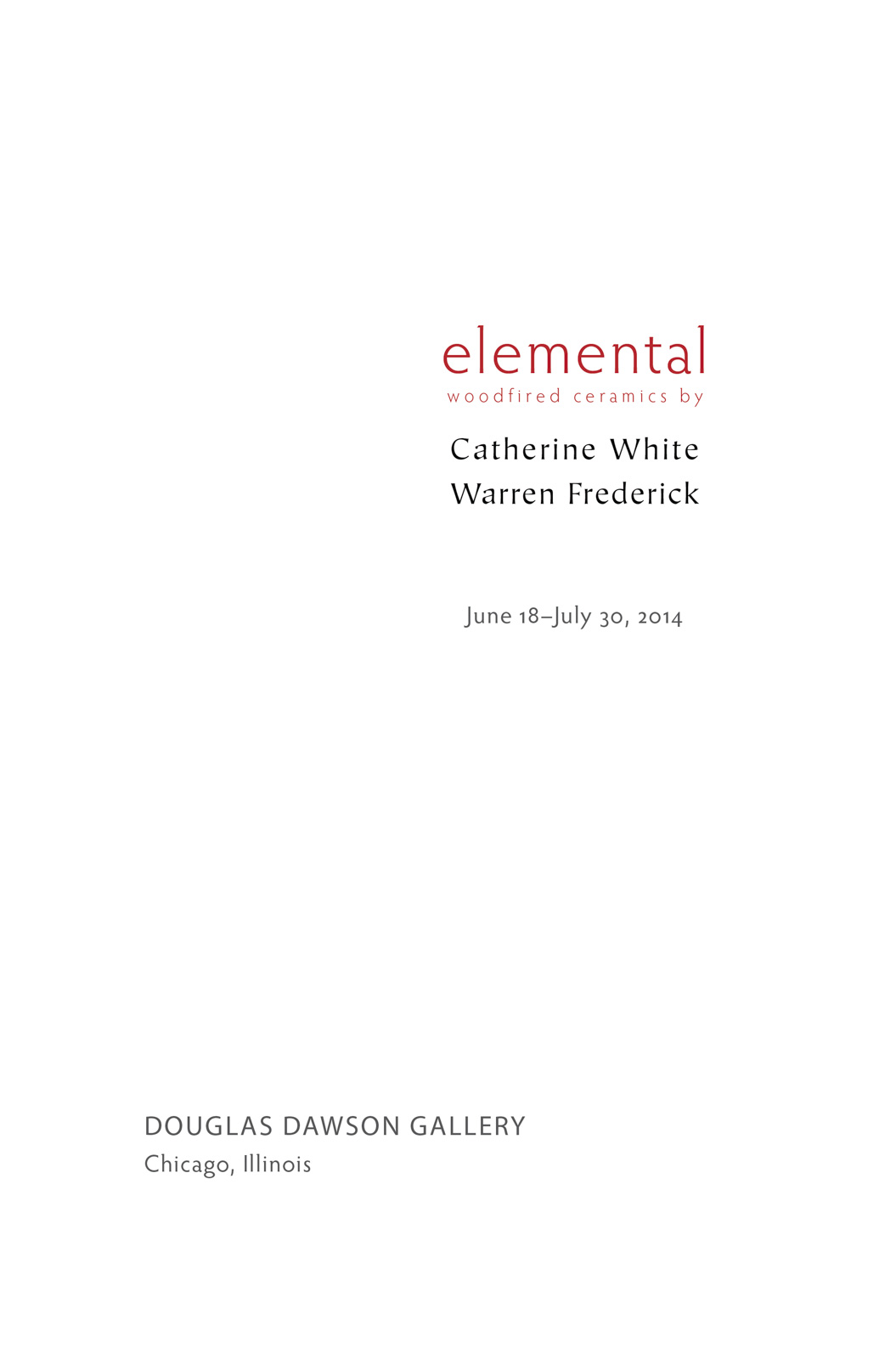
Title Page
Foreword
by Douglas Dawson
Catherine White and Warren Frederick are two exceptional potters. Their studio and wood-fired anagama (kiln) are located in the rolling foothills of the Appalachians in western Virginia. Both Catherine and Warren are highly trained artists, with talents not restricted to clay. However, their work in clay is a resolution of the often sought for, but rarely achieved, symbiosis between material and process; in this case native clays judiciously combined and the ancient, primordial cave kiln, anagama.

Firebox and first row of stacking, April 2014
The majority of pieces in this exhibition are unglazed stoneware. The rich, textured surfaces are a result of ash deposition on the pieces during the wood-fueled firing. Ash heated to a sufficiently high temperature chemically combines with the clay body, melting to form a glassy surface on the body of the vessel. The mixture of serendipity, control, moisture, wood, clay type and the personality of the kiln determine the result. Basic to this mixture of course is the experience of the potter.
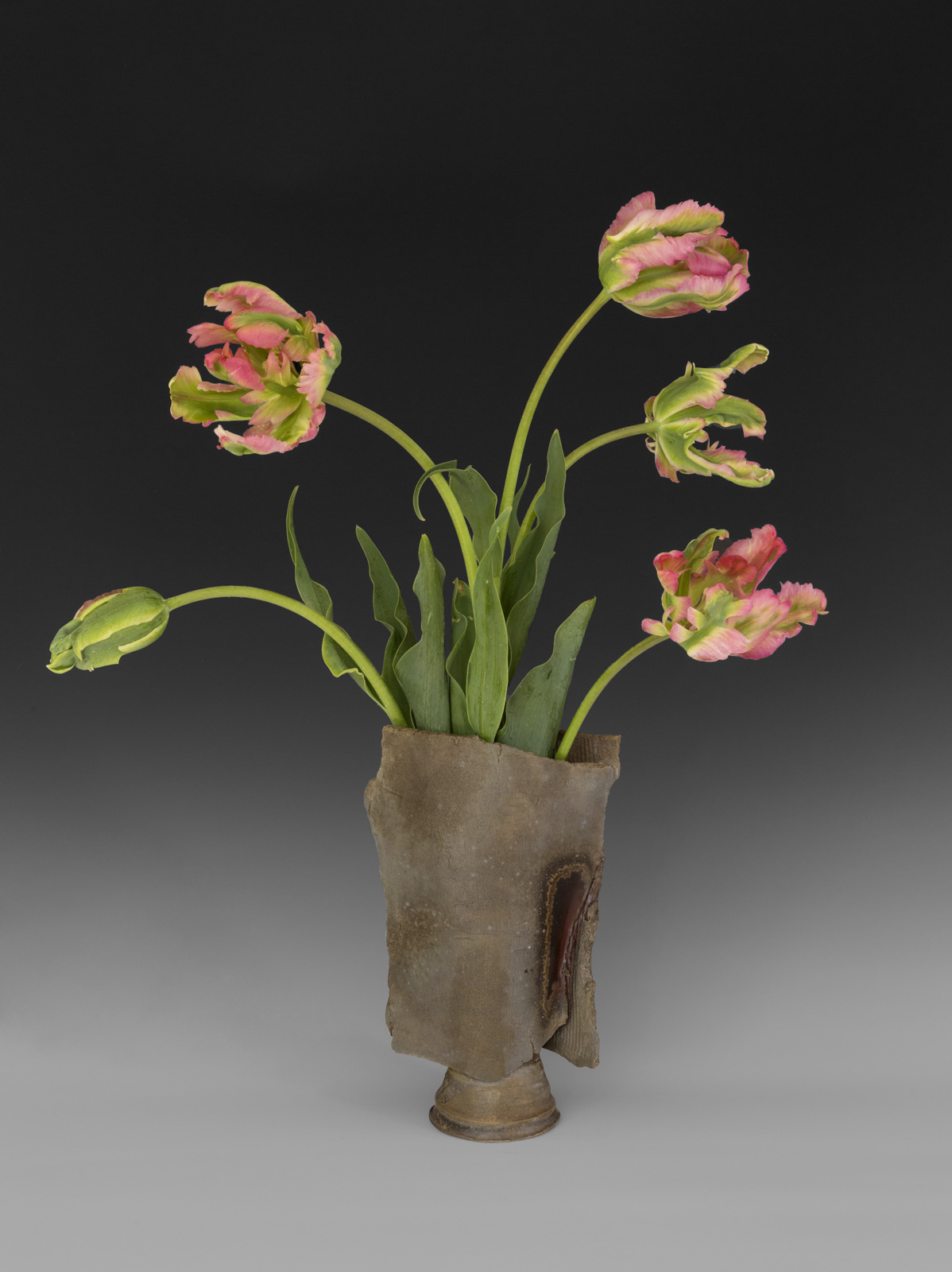
Shield Vase (with tulips), Catherine White
h 10.5" w 6.5" d 3.5"
Catherine and Warren’s work is functional. Their work and their philosophy are refreshingly free of the tedious conversation of whether functional work can be considered ‘art’. To quote Warren, “I am entranced by pottery’s ability to infiltrate art into life.” Their work explores the “aesthetic potential of actual use.” This, of course, has been well-understood by the Japanese for a millennium. Simply stated, Catherine and Warren’s work rests as well on the table as on the pedestal. This corpus of work includes sets as well as the unique piece. The variety of objects includes sets of bowls and small plates, flower vases and large jars. Fundamentally the work exists to enrich the daily experience of living with and using beautiful pottery.
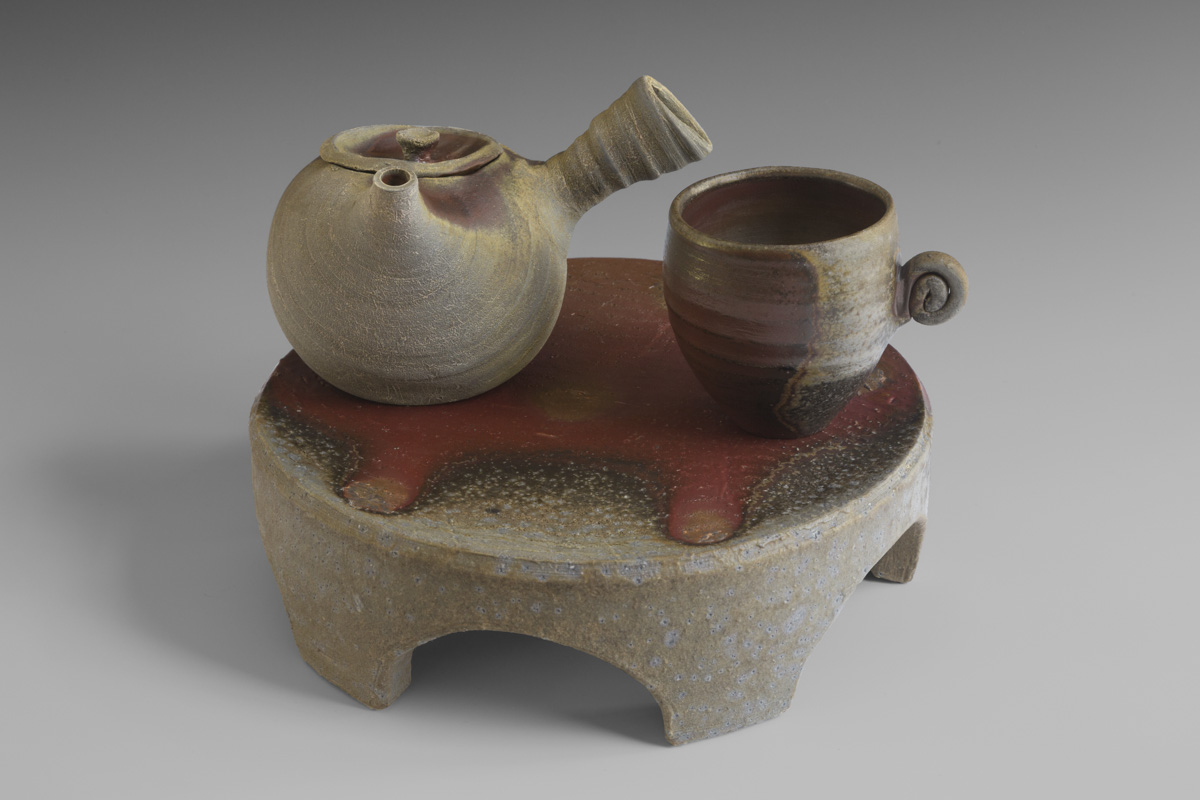
Teapot, Catherine White
Arch Stand and Whorl Cup, Warren Frederick
The Certainty of Variability
by Catherine White and Warren Frederick
For us, the certainty of variability is what makes the anagama a collaborative tool of value. There is an artistically intriguing relationship between clay+form+firing that excites and renews us through each cycle of work and assessment. After many years of anagama firings we are struck by the primacy of clay character in this tripartite relationship. Yet each firing has a coherent identity uniquely its own. Our smooth, tight ball clay body varies in response to different realms of temperature and ash within the kiln—and so, in turn, must the forms

Catherine and Warren stoking, April 2014
A particular shape that evolves over several firings with a smooth, light stoneware is transformed when the clay is more iron rich and rocky. An orange blush found within a closely stacked set of plates in the cool rear section calls forth fresh ideas to exploit that particular characteristic in subsequent firings. It is the guaranteed variability of the anagama that motivates new forms in each section of the kiln, new ideas with each kind of clay. With each firing, clay and form evolve in a tandem vibration.
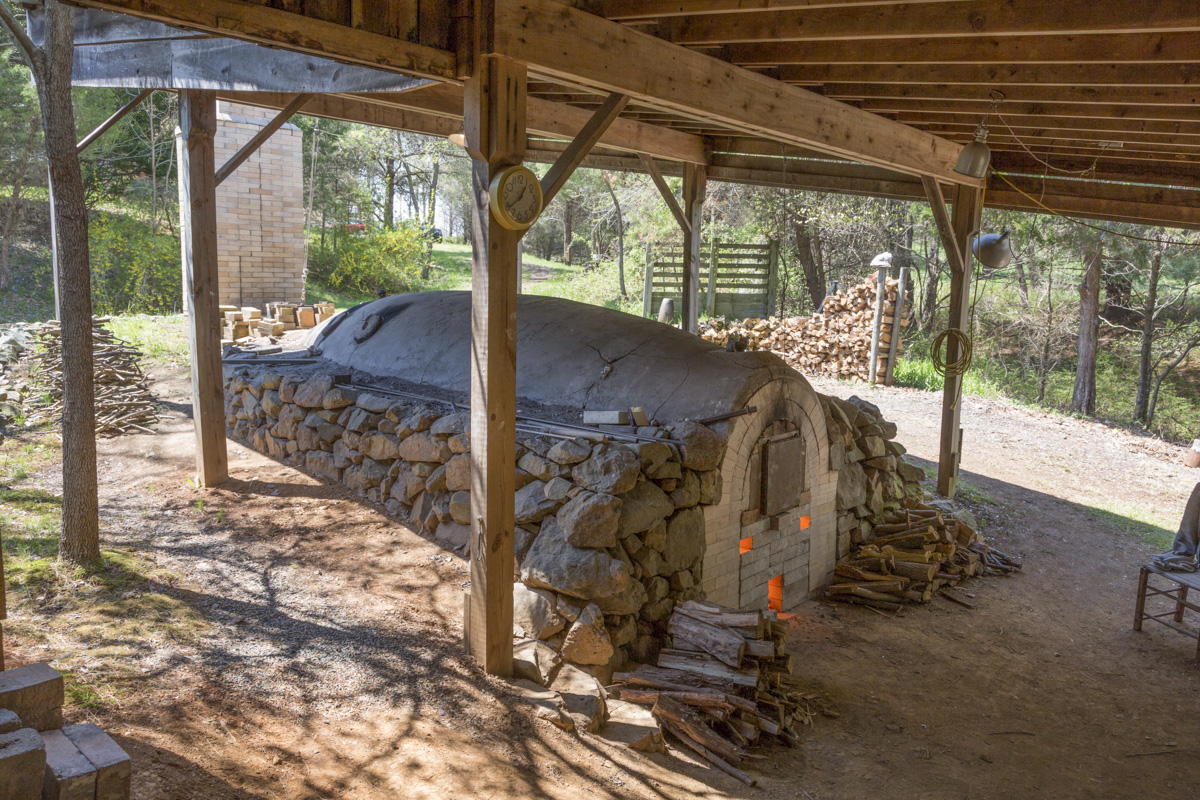
Anagama, Warrenton, Virginia
Each firing proves or disproves the conscious and unconscious choices made. This perhaps, is the biggest difference in comparison to historical kiln sites that more consistently refined a repertoire of forms in response to a single local clay. Yet, no matter where one works, there are different qualities and characters of clay to be chosen. The palette of an anagama is an aesthetic construction. Iron content can be altered; a clay body’s resistance to ash can be changed, impurities can be increased or reduced; the peak temperature and amount of reduction in a firing can be altered; the cooling atmosphere can be reducing or oxidizing. All are grist, variables to be modified, explored, and exploited.
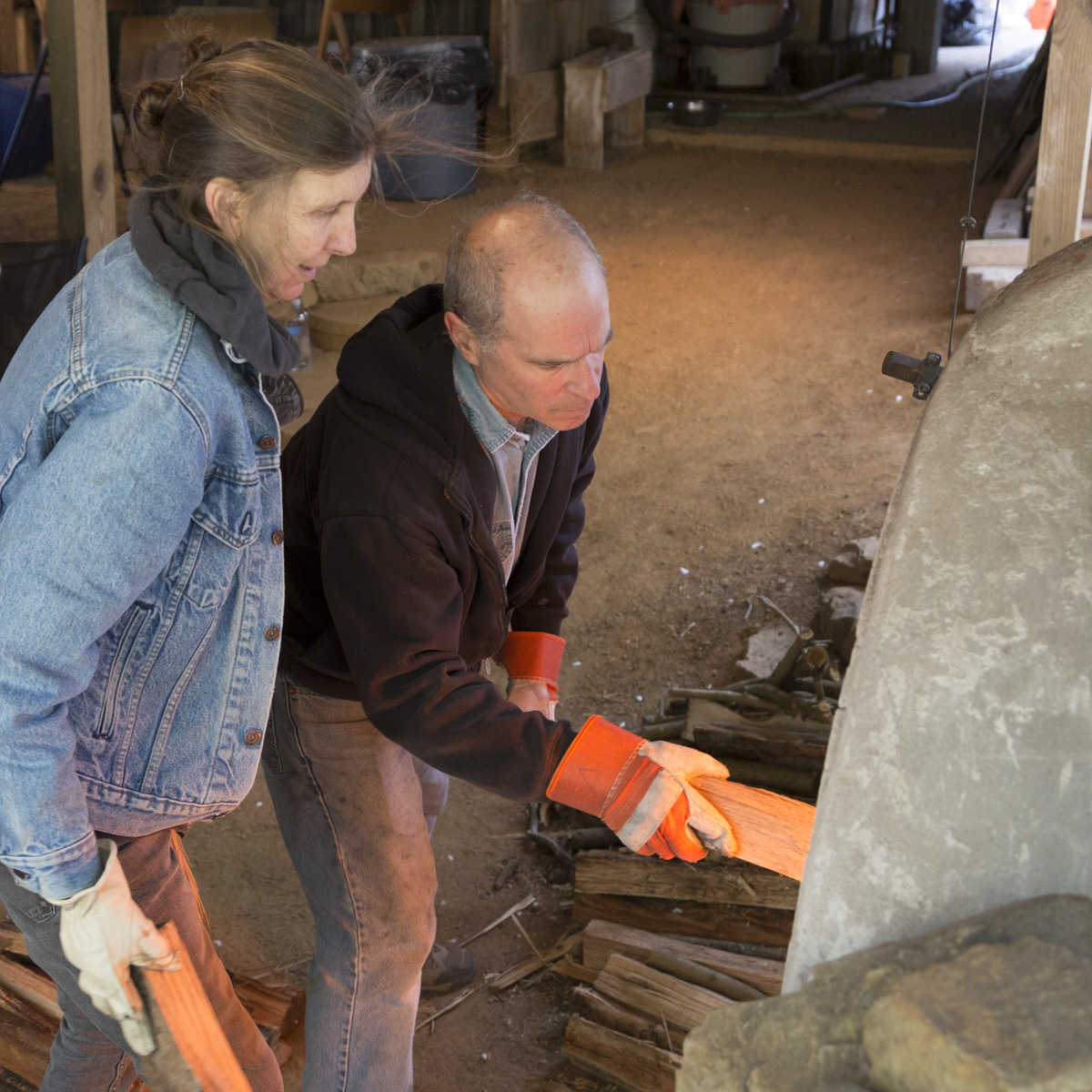
Stoking together, April 2014
Our forms always relate to a place and method of stacking. The rear of the anagama can lead to more overall colorings and textures, while the front often shows strong variations between the “lively” face and its reverse. Ash patterns can be altered by the direction of stacking (sideways, overlapping, upside down); some forms are made for close stacking on the silica sand floor; other forms are augmented with Catherine’s prints from ash and clay dust drawings. Slab plates are often stacked upside down in groups of four to six separated by clay wads. Variability provides creative fuel to circumvent stagnation.
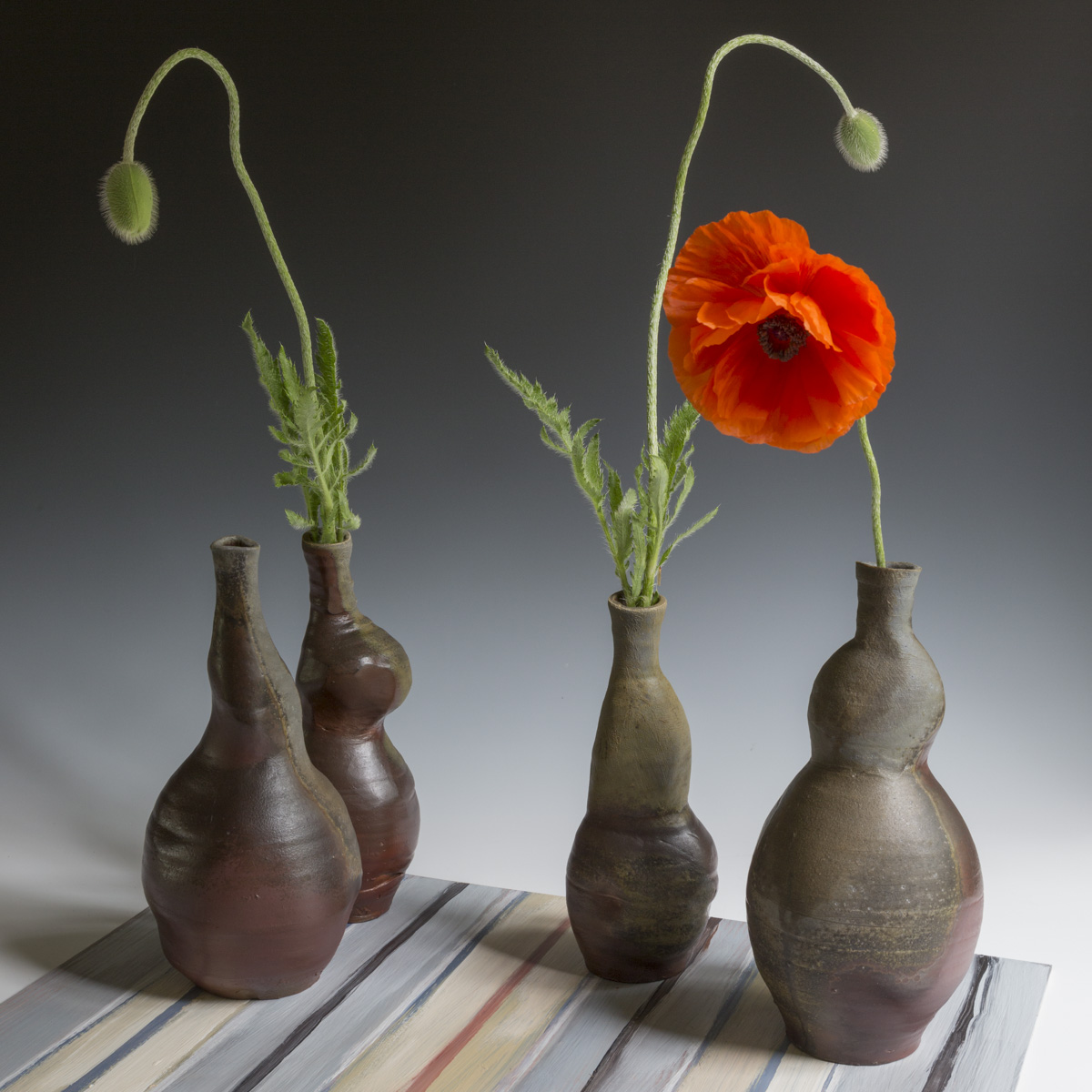
Venus Discussion, Catherine White
h 9.5" w 5" d 4" to h 8" w 3" d 3.5"
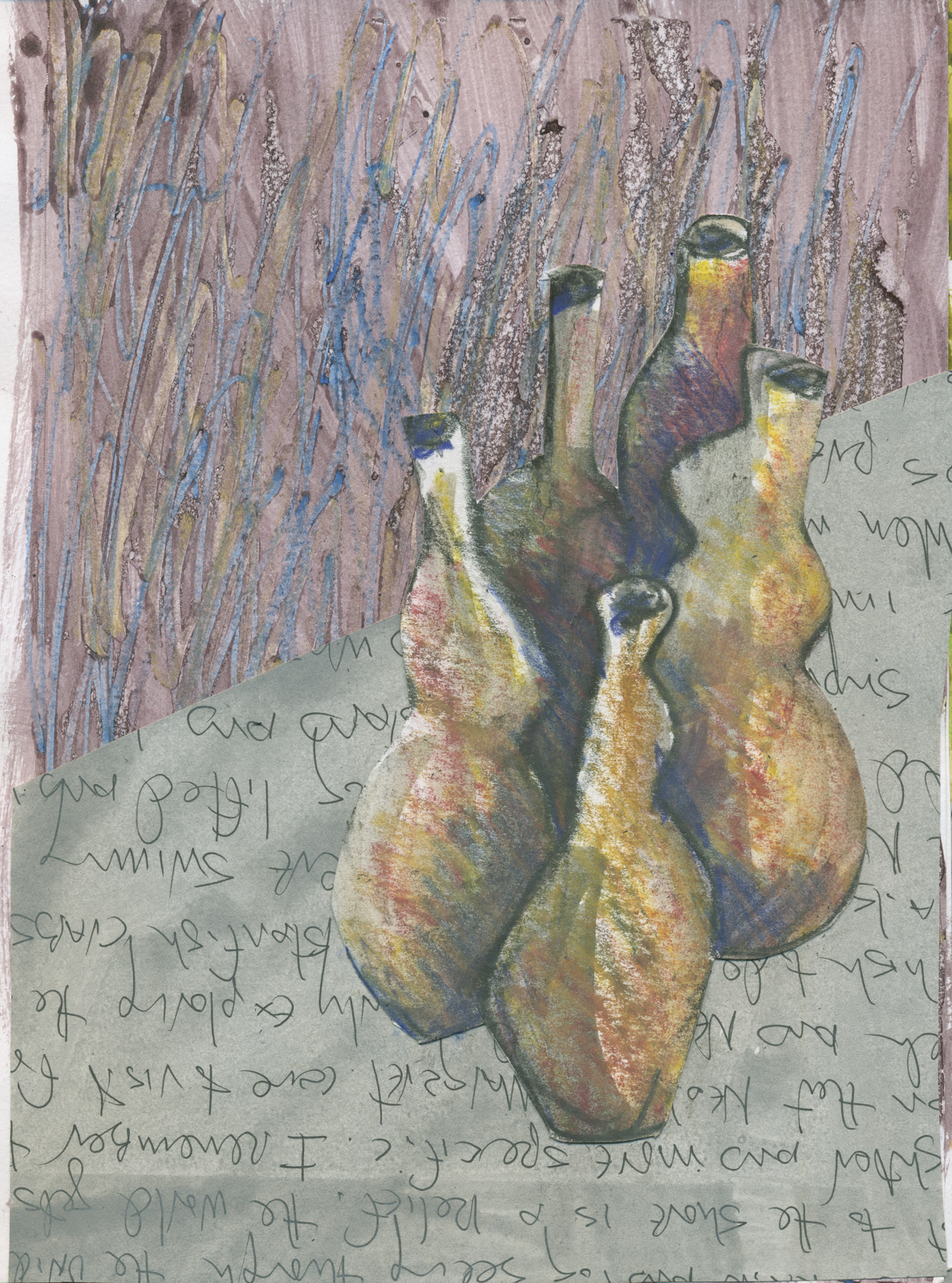
Venus Cluster (drawing), Catherine White
h 10" x 7"
Elementally the essence of pottery requires the actual use of food, drink, or flowers. Our pottery aims to be incomplete and understated because it can thus impel a user into repeated and varied creative collaborations. Combining woodfired natural ash glazes with elemental forms confronts the user to become engaged in unexpected poetry. Meaningful pottery brings art into daily life as an integral—yet unusual—companion.
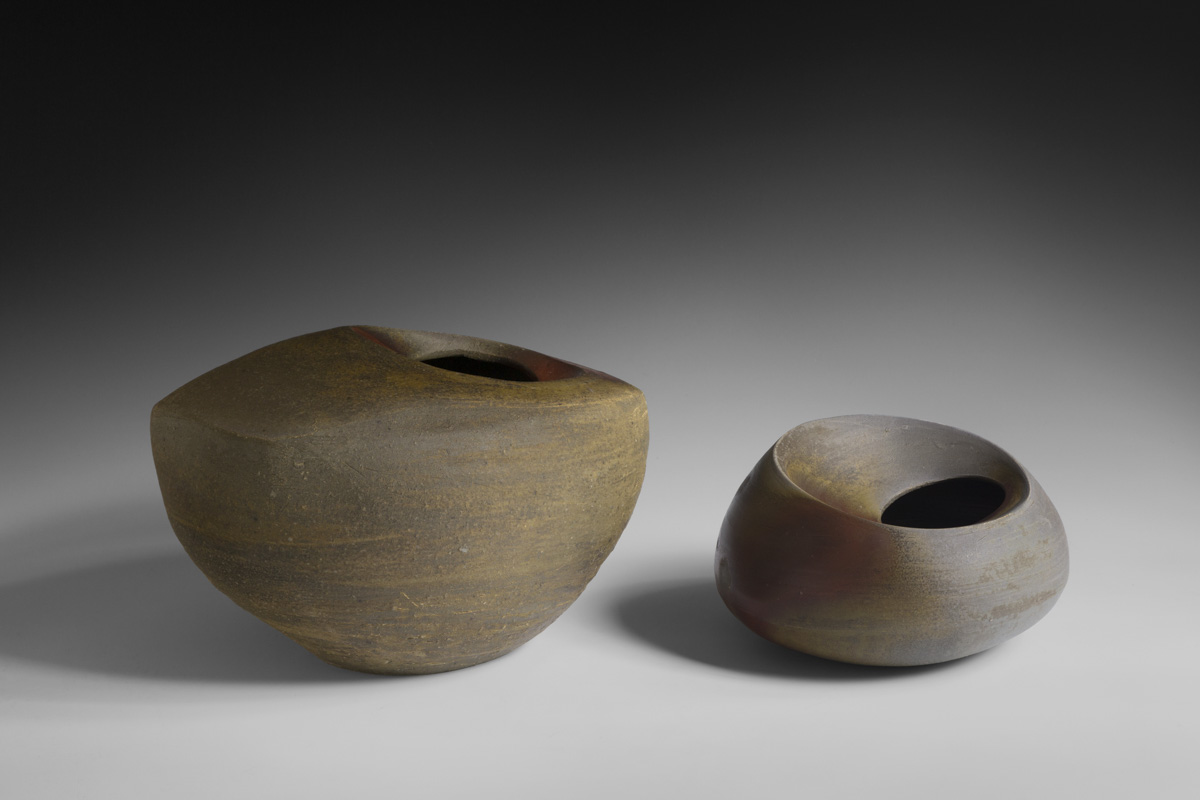
Tidal Erratics, Catherine White
h 7.75" w 11.5" d 10.5" and h 5" w 8.25" d 8.5"
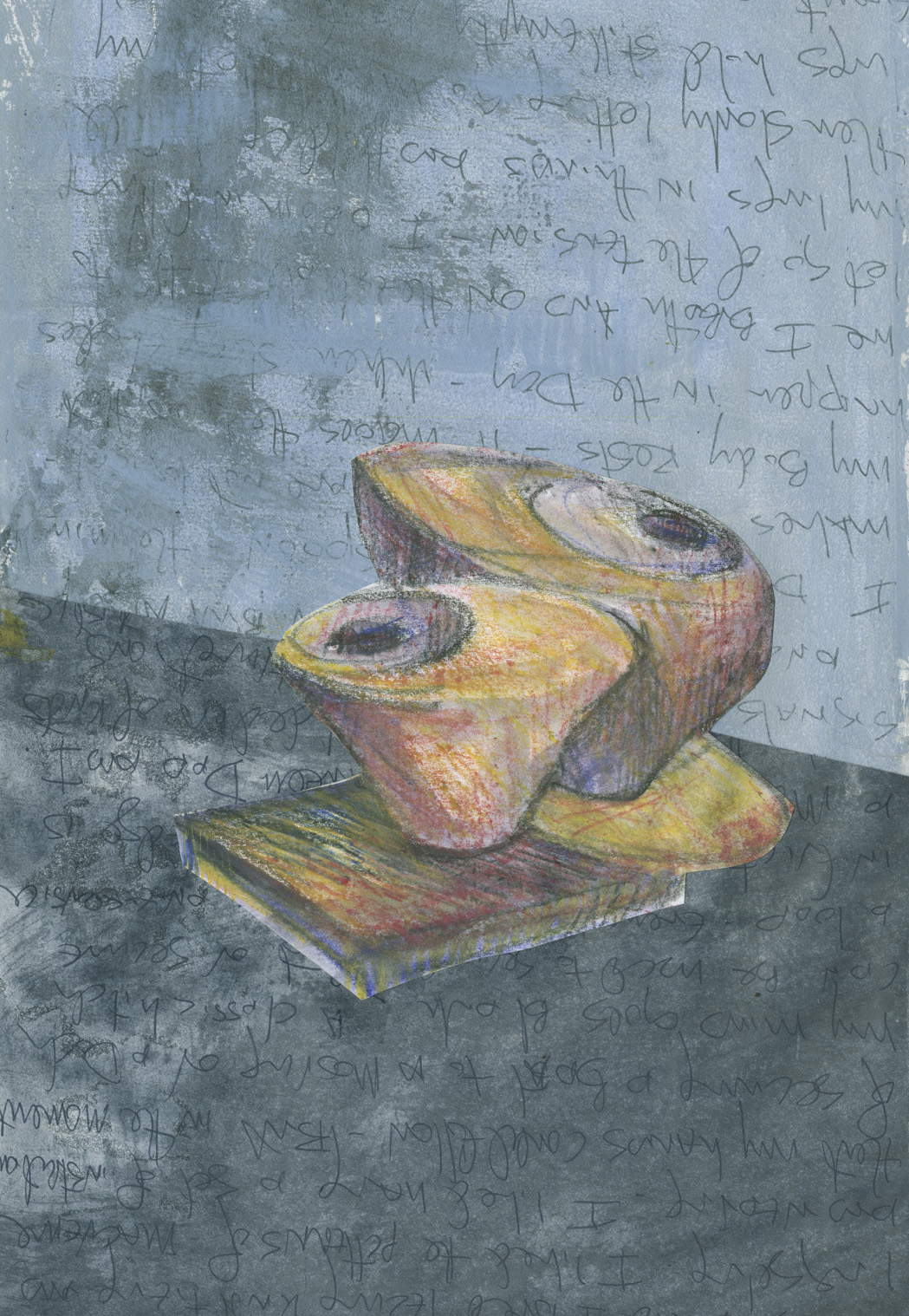
Tidal Erratics II (drawing), Catherine White
h 13" x 9"
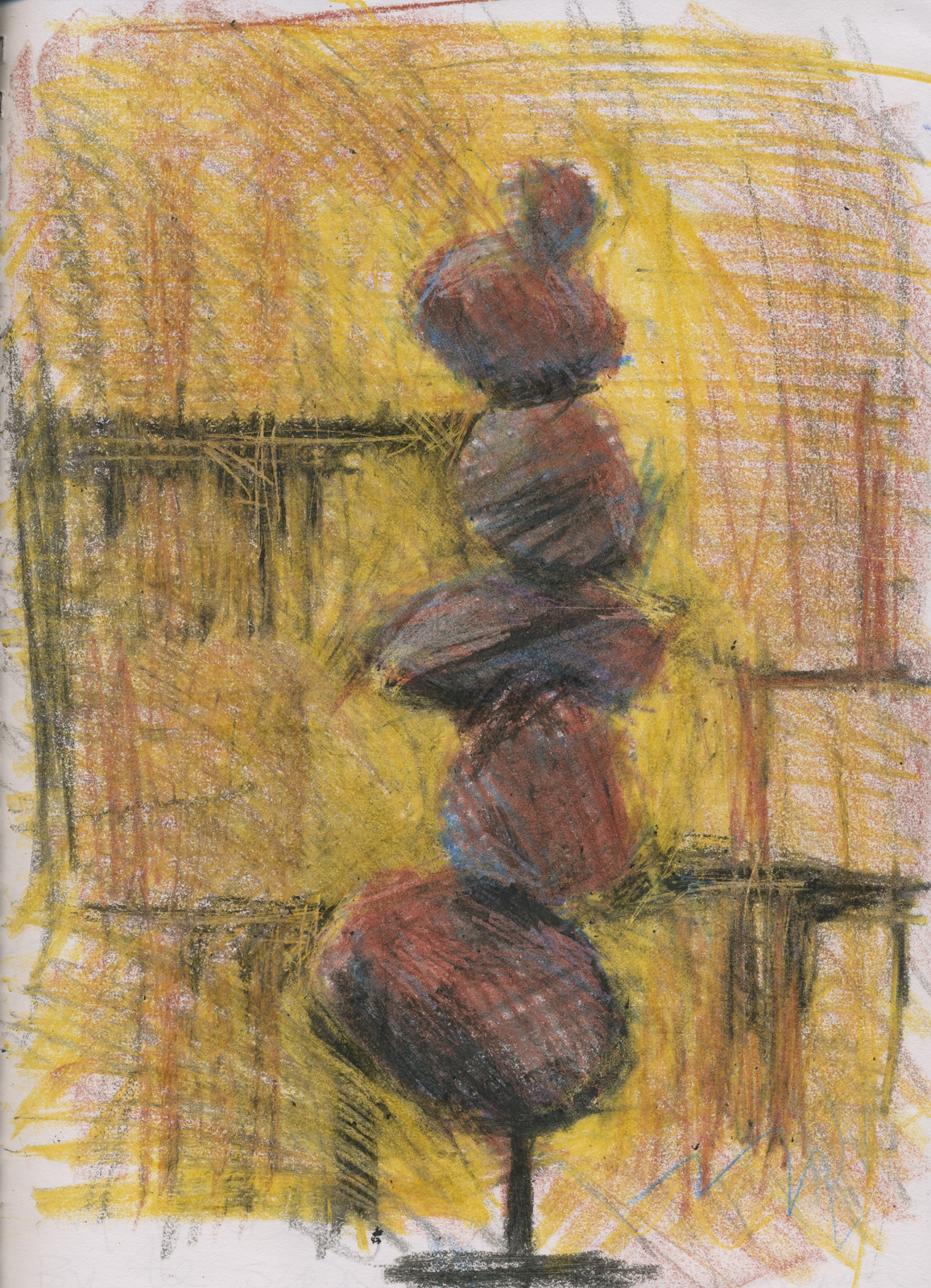
Totem (drawing), Catherine White
h 12" x 8.5"
(Page 107)

Afterlife Shield, Catherine White
Left: h 16.5" w 6.5" d 4.5"
Twins, Warren Frederick
Right: h 14" w 6" d 5"
(Rear Cover)